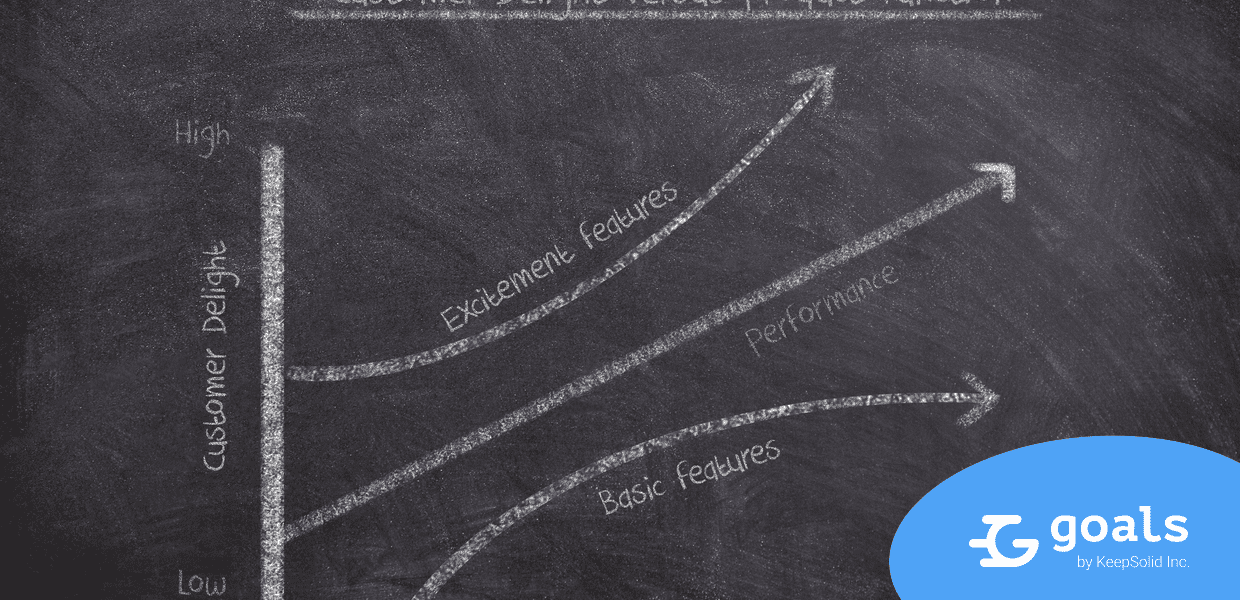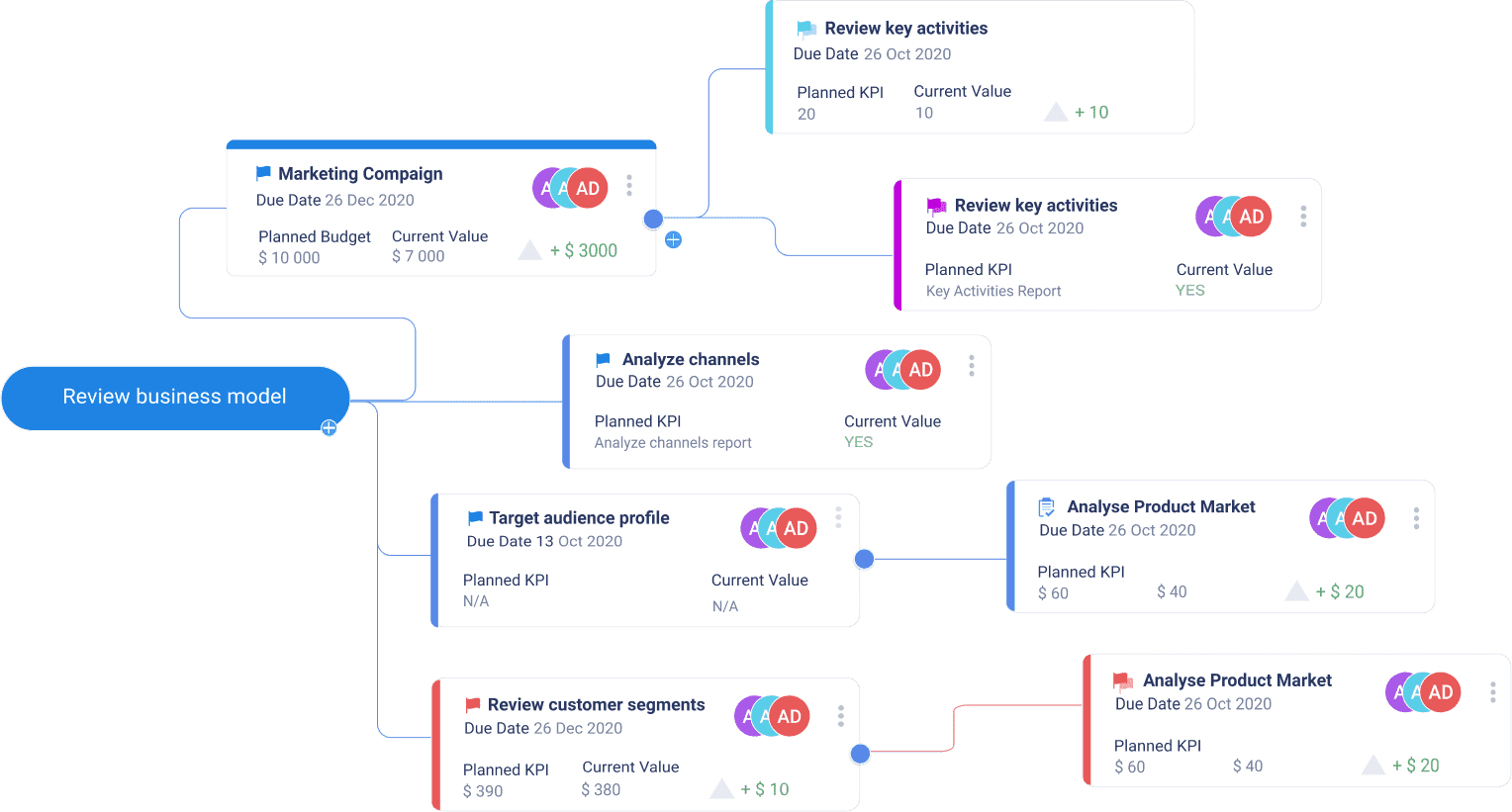What is Kano Model?
The Kano Model is a prioritization framework that ranks features on a roadmap based on the forecasted customer satisfaction. This method was proposed by a Japanese researcher Noriaki Kano who defined techniques to determine customers’ and prospects’ satisfaction with new features. The core of the Kano Model are three principles:
- Features can be organized into five groups-categories that impact customers’ perception of the product.
- Customer satisfaction is relative to the level of functionality of a feature.
- Customer feedback about a feature is collected with a questionnaire.

Feature Categories
Kano classifies features into categories that reflect how they contribute to the overall customer satisfaction with the product. In this sense, the two biggest categories are features that must be included and features that should be avoided.
Features to include
Basic (must-be) features. The most essential features are expected by customers for a product to do what it promises. The simplest example of such a feature is the ability of a phone to make calls. These features do not make customers more satisfied, rather their absence makes the product unusable.
Performance (one-dimensional) features. This category is the most intuitive and linear one from the satisfaction perspective: the more a product provides, the more satisfied the customers are. Examples of such features are the battery capacity of a phone, a screen resolution, or even the amount of sausage in your pizza.
Attractive features (delighters). These are features that are not expected but are positively perceived by customers. They do not have to cause extreme delight, some of them, like extra softness of a tissue, can be simply perceived as nice, but they add to the overall product image. Yet, though satisfaction with such features rises quickly, at a certain point the increase of excitement fades away and they turn into an overkill.
Features to avoid
Indifferent. These are the features whose presence or absence remains unnoticed by customers and does not impact their satisfaction with the product. Investing in such features should be avoided because this is essentially a waste of money and effort which will not be appreciated by the end-user.
Dissatisfaction features (reverse attributes). Such features, if present, cause customer frustration and extreme dissatisfaction that may lead them to stop using the product. Such features should be eliminated altogether.
Customer Satisfaction vs. Functionality
Kano proposes a two-dimensional model:
- The satisfaction dimension goes from delight or excitement all the way to frustration.
- The functionality, or investment, dimension represents how well a feature is implemented or how much investment it requires. This dimension covers a range from the best implementation possible to no functionality at all.
These are not always linear scales, and it is their combination that determines customers’ feelings about the product.
Kano Questionnaire
The Kano questionnaire consists only of a pair of non-open questions for each feature that is evaluated:
- How customers feel if they have the feature.
- How customers feel without the feature.
The answers to both questions are limited to five options:
- I like it
- I expect it
- I am neutral
- I can tolerate it
- I dislike it
A combination of answers to both questions provides enough feedback to place the feature into one of the categories and decide on its fate.
The Kano model is most useful for teams with limited resources that need a systematic approach to feature prioritization so that they can understand which features are the bare minimum for a product, which performance features are worth investing in and which delight features have the highest effect.



